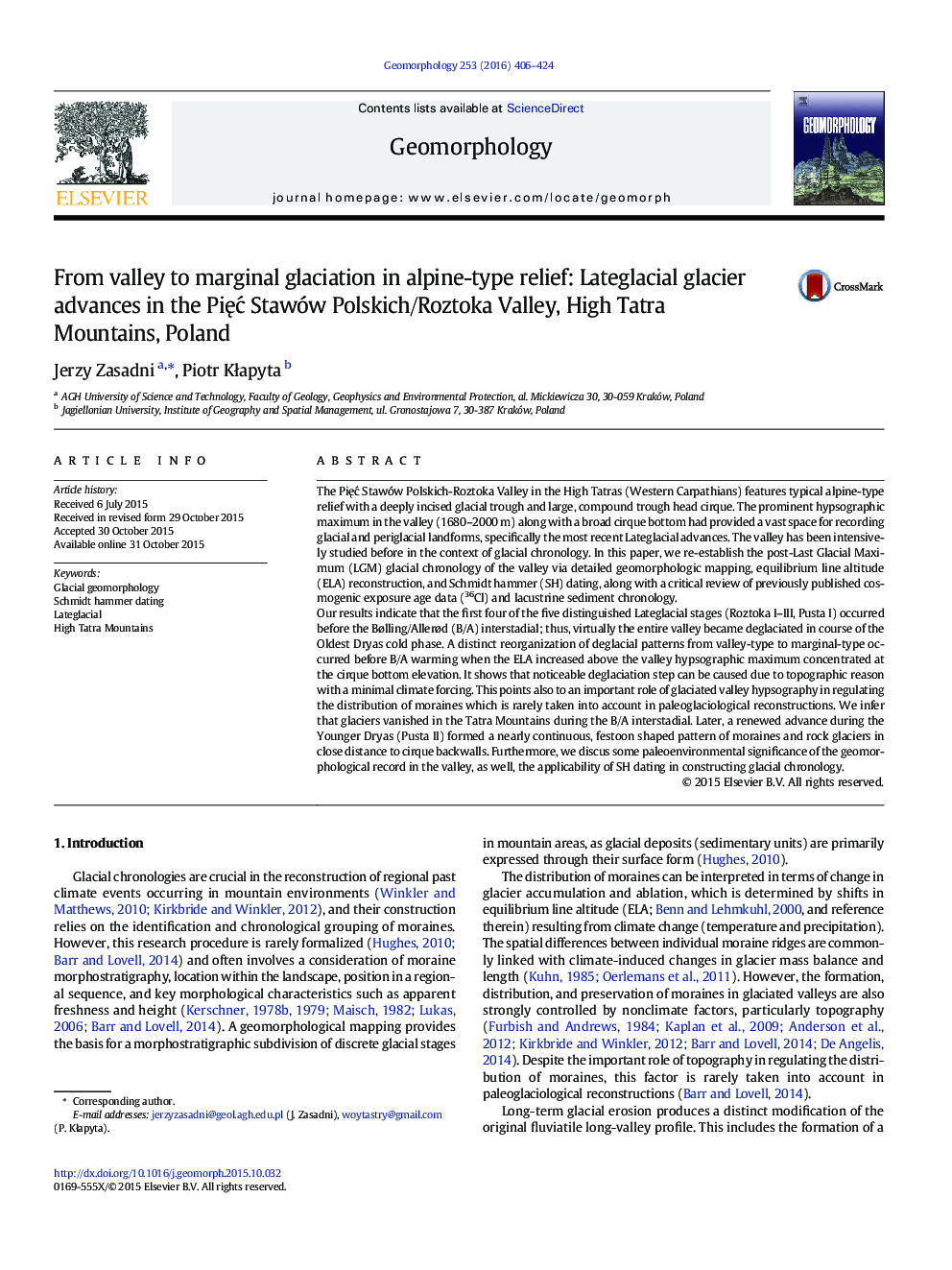| کد مقاله | کد نشریه | سال انتشار | مقاله انگلیسی | نسخه تمام متن |
|---|---|---|---|---|
| 6431736 | 1635396 | 2016 | 19 صفحه PDF | دانلود رایگان |

- Mapping and Schmidt hammer (SH) datings in a key locality in the Tatra Mts
- 5 Lateglacial stages, LGM, pre-B/A and YD surfaces discriminated in SH rebound test
- ELA rise over valley hypsometry maximum caused reorganization of deglaciation pattern.
- Likely no glaciers already in B/A; renewed YD advance - marginal type of glaciation
- Early-dry and later-wet YD climate revealed in geomorphic record.
The PiÄÄ Stawów Polskich-Roztoka Valley in the High Tatras (Western Carpathians) features typical alpine-type relief with a deeply incised glacial trough and large, compound trough head cirque. The prominent hypsographic maximum in the valley (1680-2000 m) along with a broad cirque bottom had provided a vast space for recording glacial and periglacial landforms, specifically the most recent Lateglacial advances. The valley has been intensively studied before in the context of glacial chronology. In this paper, we re-establish the post-Last Glacial Maximum (LGM) glacial chronology of the valley via detailed geomorphologic mapping, equilibrium line altitude (ELA) reconstruction, and Schmidt hammer (SH) dating, along with a critical review of previously published cosmogenic exposure age data (36Cl) and lacustrine sediment chronology.Our results indicate that the first four of the five distinguished Lateglacial stages (Roztoka I-III, Pusta I) occurred before the Bølling/Allerød (B/A) interstadial; thus, virtually the entire valley became deglaciated in course of the Oldest Dryas cold phase. A distinct reorganization of deglacial patterns from valley-type to marginal-type occurred before B/A warming when the ELA increased above the valley hypsographic maximum concentrated at the cirque bottom elevation. It shows that noticeable deglaciation step can be caused due to topographic reason with a minimal climate forcing. This points also to an important role of glaciated valley hypsography in regulating the distribution of moraines which is rarely taken into account in paleoglaciological reconstructions. We infer that glaciers vanished in the Tatra Mountains during the B/A interstadial. Later, a renewed advance during the Younger Dryas (Pusta II) formed a nearly continuous, festoon shaped pattern of moraines and rock glaciers in close distance to cirque backwalls. Furthermore, we discus some paleoenvironmental significance of the geomorphological record in the valley, as well, the applicability of SH dating in constructing glacial chronology.
136
Journal: Geomorphology - Volume 253, 15 January 2016, Pages 406-424